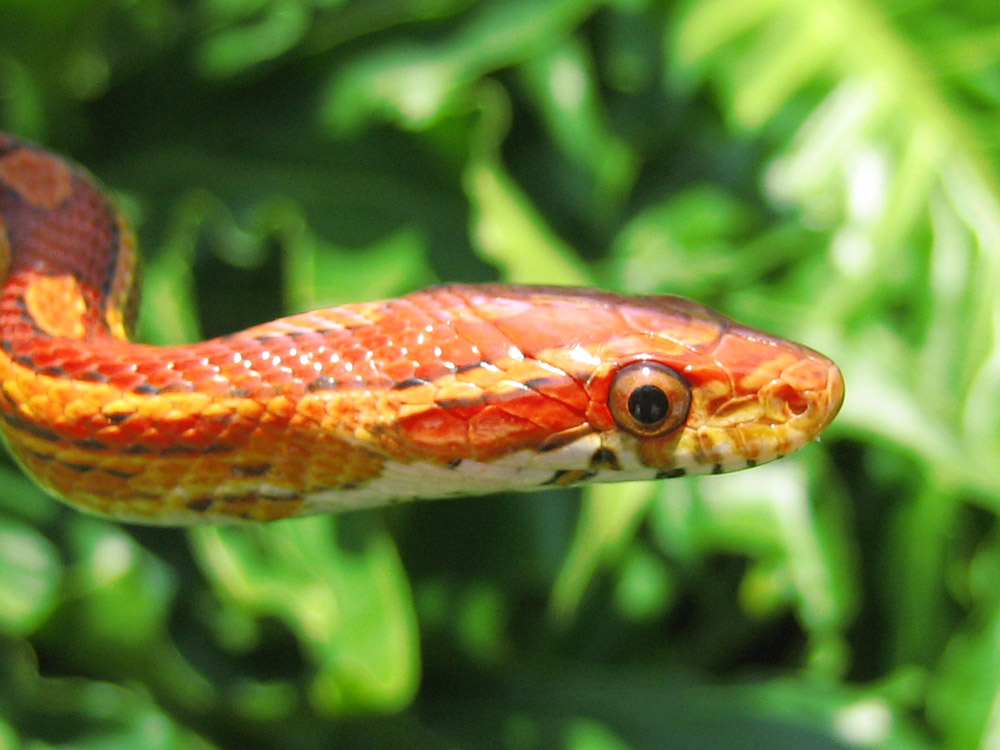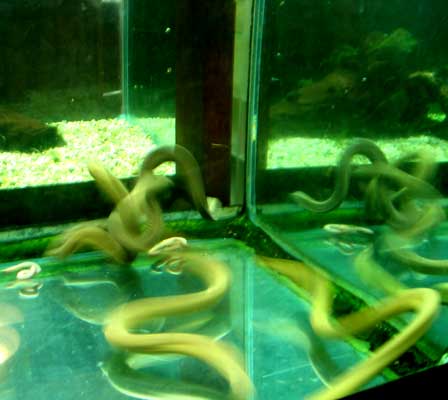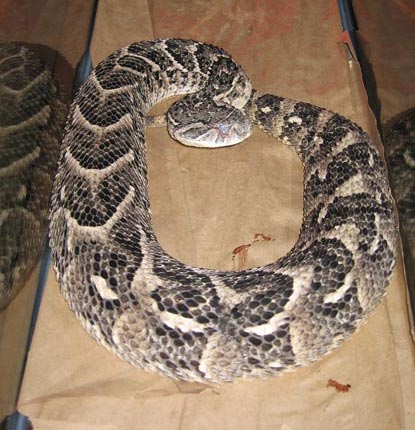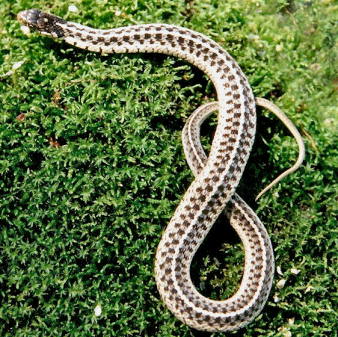Is It A Corn Or A Rat!?
Corn and Rat snakes both belong to the genus Elaphe; Corns belong to the species Elaphe guttata; many of the rat snakes are subspecies of Elaphe obsoleta. For a full list of the Elaphe species, see the TIGR Database: Colubridae: Elaphe.
The Latin word elaphe means deerskin; guttata means speckled or spotted. Both terms apply to corns and rats: in most species, their skin feels like finely tanned deerskin, while the patterns on their back create spots or speckles. Some people see the patterning of the belly scales as resembling maize, a colorful ancestor of our modern day corn. Another theory relating to how corn snakes got their name comes from the early Europeans settlers. They frequently found these snakes in their corn fields and corn cribs, and thought they were eating the corn! In fact, the corn snakes were, and remain, very helpful to farmers as they help keep down the rodent population. Amelanistic corns (those lacking the black and brown skin coloring) are sometimes called "red rat snakes" because of their red-to-orange coloring.
There are presently two subspecies of corns, E. g. gutatta and E. g. meahllmorum.
The care information below discusses corns. The same information applies to rat snakes, as well, other than that species whose overall length and size are larger than corns will require larger enclosures and larger prey.
Natural History
Corns are commonly found in deciduous forests, pine barrens, rocky hillsides and farm areas over a broad swath of the United States (Alabama, Arkansas, West central/Southeast Colorado, Delaware, Florida, Georgia, Illinois, Kansas, Kentucky, Louisiana, Maryland, Mississippi, Missouri, Southern Nebraska, New Jersey, New Mexico, North Carolina, Oklahoma, South Carolina, Texas, Eastern Utah, Virginia). They have also been reported in Mexico (Chihuahua, Coahuila, North Durango, Nuevo Leon, Tamaulipas) and the Cayman Islands.
Corns are most active at night or in the hours of dawn and dusk (crepuscular). While they are primarily ground-dwellers, some are semi-arboreal. While the Elaphes feed on everything ranging from fish to frogs to rodents to mammals, wild Corns start off feeding on small invertebrates and vertebrates, such as crickets. Corns lay eggs, becoming sexually mature at around two years of age.
Personal Statistics
Hatchlings range in size from 9-14 inches (22-36 cm); adults are generally 2.5 to 5 feet 76-152 cm) in length; most are in the 3-4 foot (91-122 cm) range. The average life span of these snakes is 10 years, although one was documented to be 21 years old.
In the wild, hatchlings feed largely on small lizards and tree frogs, while adults feed on small rodents and birds, killing their prey by constriction. In captivity, hatchlings Corns can easily be started on pinkie mice (1-2 day old), quickly moving up the prey scale, to fuzzies, crews and small adult mice. Both hatchlings and adults can be fed prekilled rodents.
When selecting a corn or rat snake, look for a well-fleshed body, no visible cuts or abrasions, clear, alert eyes, tongue flicking, no signs of mites or ticks. The vent should be clean.

corn snake vey dangerous

corn snake very dangerous

corn snake very dangerous

corn snake very dangerous

corn snake very dangerous

corn snake very dangerous

corn snake very dangerous

corn snake very dangerous
 wonder gecko picture
wonder gecko picture wonder gecko picture
wonder gecko picture wonder gecko picture
wonder gecko picture wonder gecko picture
wonder gecko picture wonder gecko picture
wonder gecko picture wonder gecko picture
wonder gecko picture wonder gecko picture
wonder gecko picture wonder gecko picture
wonder gecko picture wonder gecko picture
wonder gecko picture






.jpg)

































